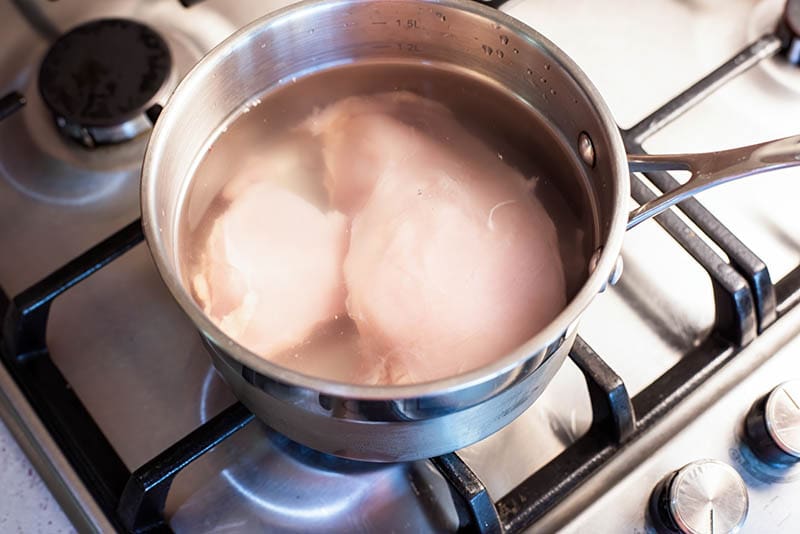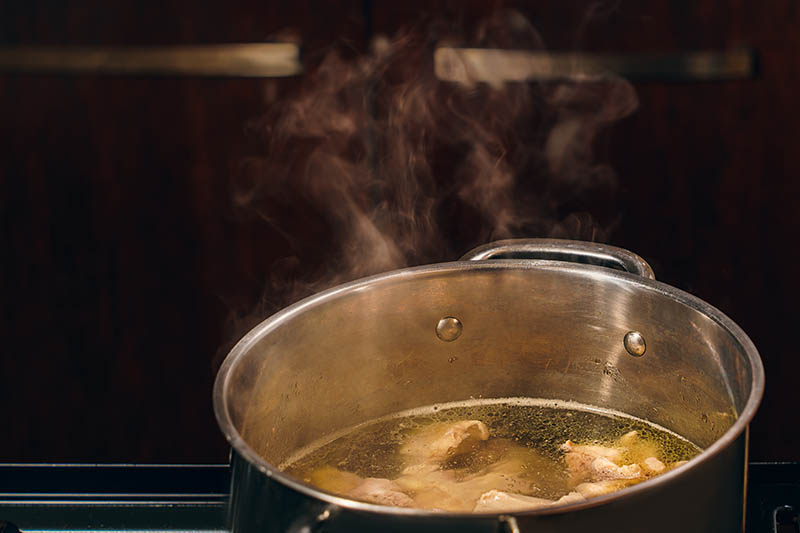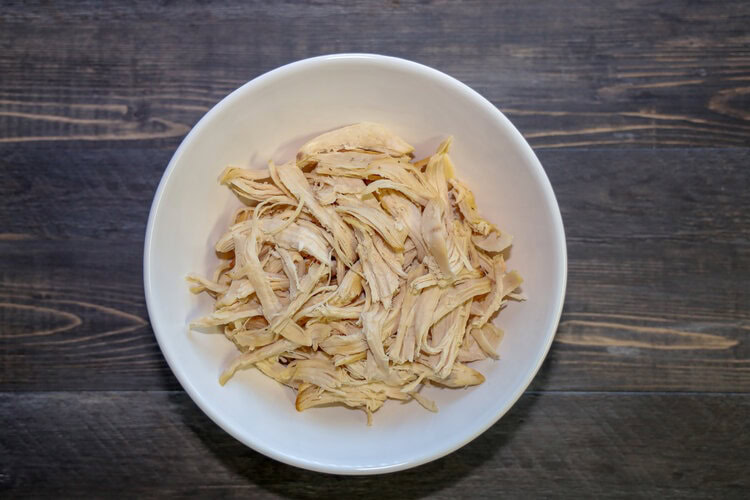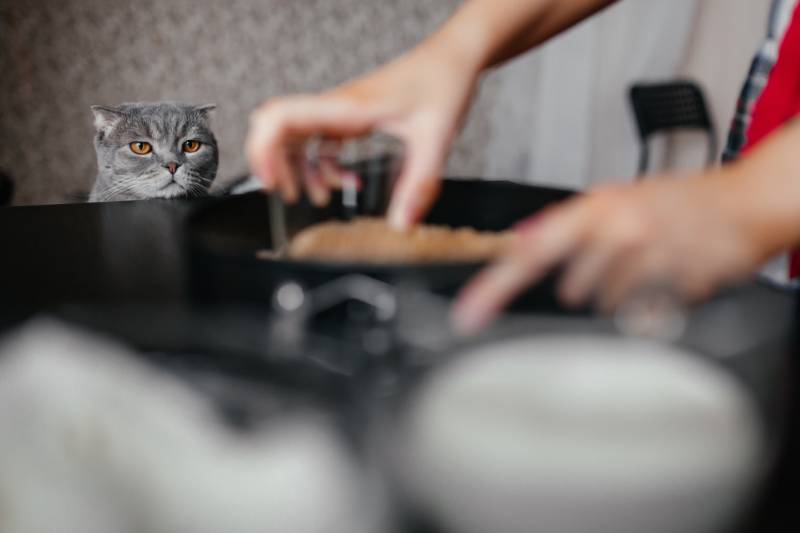VET APPROVED

The information is current and up-to-date in accordance with the latest veterinarian research.
Learn more »Click to Skip Ahead
If you own a cat, the idea of giving them something more than their daily cat food isn’t unusual. One of the best proteins you can offer your kitty is chicken. As an obligate carnivore, your cat will thank you. However, cooking chicken for your cat can be tricky. When it comes to human foods, there are dangers every pet owner should be aware of before allowing their kitty to partake. You can keep reading for a step-by-step guide on how to cook chicken for cats, facts you should know, and even a recipe you can try out.

Before You Get Started
Before you decide to give your cat cooked chicken, you should be aware that although it is a protein and can be fed as a meal or treat, it does not contain every nutrient your cat needs. Yes, it can be used as a meal replacement or treat occasionally, but your cat needs a complete and balanced diet in the long term. You may also wonder how long it takes to boil chicken for cats. Times may vary depending on your stove and temperature settings, but the internal temperature should reach 165 degrees Fahrenheit and have no pink visible.
When selecting your chicken, we also suggest that you choose boneless. Yes, it is possible to debone chicken, but you must ensure you never give your cat a cooked chicken bone. We recommend removing the bones beforehand to ensure that your cat is free from the dangers involved with bone and splintered bits of bone.


How to Cook Chicken for Cats
1. Gather Your Materials & Ingredients
Making a meal for your kitty is no different than making one for the family. Before you get started, gather all the materials you’ll need. This reduces the chance of clambering around your kitchen, looking for a tool while your chicken sits at room temperature. Here’s a list of supplies you’ll need to cook plain chicken for your kitty.
- Medium pot
- Boneless chicken
- Chicken broth or water (enough to cover the chicken in the pot)
- Meat thermometer
- 2 forks
- Cutting board
- Dish for serving
2. Starting at the Right Temp
The next step is to set your stove’s temperature. You want to cook the chicken on medium-high heat. Add water to a pot and heat it on the stove until it boils. Then, add the chicken pieces, which will cook faster if they’re small. How long does it take to boil chicken for cats? At least 15–20 minutes, or until the chicken is cooked through.

3. Check the Internal Temperature
For your kitty’s safety, you want to ensure the chicken is cooked thoroughly. Use your meat thermometer to check. The recommended temperature should be 165 degrees Fahrenheit. You should also make sure there is no pink in the chicken.
4. Shredding
Once the chicken is cooked thoroughly, remove it from the pot and place it on a cutting board. When the chicken has cooled, use the two forks to carefully shred the chicken into smaller pieces. Make sure you don’t give your cat large pieces since they can choke. If you use chicken with bones (which we don’t recommend), ensure they’re removed before feeding your cat.

5. Serve It Up
When the chicken is shredded and has cooled, you can serve it to your cat.
If you still have questions about how to prepare chicken for your cat, our Vets can help!

Important Tips
If you decide to make chicken for your cat, you may be tempted to add seasoning. Seasonings can be dangerous, especially onions and garlic, which are toxic to cats. Instead, stick with plain chicken and avoid giving your kitty the fat trimmings.
You’ll also want to ensure you never give your cat raw chicken. Yes, cats in the wild eat their food raw, but your house cat’s digestive system isn’t used to it. Salmonella, Campylobacter, Clostridium, and E. Coli, found in raw chicken, can leave your cat very ill. Always ensure the chicken is cooked thoroughly before it is given to them.
Knowing exactly what your feline companion can and cannot eat will help you become the best pet parent. Recognizing that not all cat bowls are equal is also key! The Hepper NomNom Cat Bowl sets itself apart from traditional options by catering to the specific needs of cats. The innovative design offers whisker relief via shallow dishes and promotes digestion with a slight bowl elevation. Find out if the Hepper NomNom is right for your cat by clicking here. At PangoVet, we’ve admired Hepper for many years and decided to take a controlling ownership interest so that we could benefit from the outstanding designs of this cool cat company!

Simple Chicken & Quinoa Recipe
If you want your kitty to have a bit of chicken but want to spruce things up, here’s a simple chicken and quinoa recipe you can try. Quinoa is safe for your cat to enjoy.
Note: This recipe has been approved by a veterinarian because it includes only cat-friendly ingredients. However, this recipe is not a complete and balanced diet to feed your cat on a daily basis. Instead, it is a great add-on to your cat’s diet. It is only meant to be fed on occasion and not as a regular diet. Please consult your veterinarian to help you decide on the best diet for your cat.
Ingredients:
- 2 pounds of cooked chicken, cut into bite-size pieces
- ½ cup cooked quinoa
- 2 hard-boiled eggs, cut into bite-size pieces
- ½ cup cooked and pureed chopped vegetables (optional)
- 1 tablespoon fish oil
- 1 teaspoon vitamin E oil
Directions:
- Place chicken into a large pot then cover completely with water.
- Bring chicken to a boil, then reduce heat, cover, and simmer.
- Cook until the chicken reaches an internal temperature of 165 degrees Fahrenheit and no pink is visible.
- Drain, rinse, and cool, then cut into bite-size pieces.
- Return chicken to the pot, add the cooked quinoa, hard-boiled eggs, veggies, fish oil, and vitamin E oil, and stir well to combine.
- Divide into mealtime portions. This recipe can be stored in the fridge for up to 3 days or frozen before that time has passed.


Final Thoughts
As you can see, chicken is a good treat for your cat to enjoy. However, you should always ensure the chicken is cooked thoroughly with no dangerous seasonings added, such as onions and garlic. This will allow you to make something special for your kitty without worrying about harming them or going against a healthy diet.
Featured Image Credit: Rimdeika, Shutterstock













